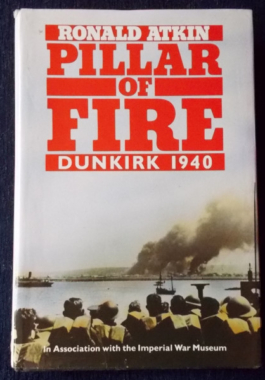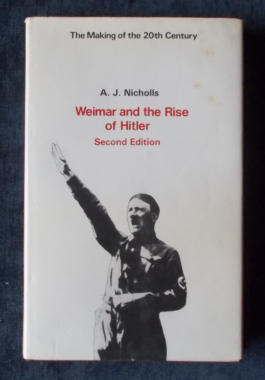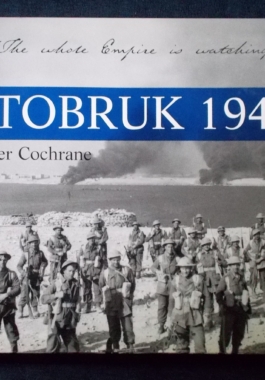- Sorry, this product is unavailable.
-
 Who is Captain Sir Tom Moore? You've seen him on the television walking the length of his garden. A frail elderly man, doing his bit at a time of crisis. But he wasn't always like this. From a childhood in the foothills of the Yorkshire Dales, Tom Moore grew up in a loving family, which wasn't without its share of tragedy. It was a time of plenty and of want. When the storm clouds of the Second World War threatened, he raised his hand and like many of his generation, joined up to fight. His war would take him from a country he had never left to a place which would steal his heart, India and the Far East, to which he would return many years later to view the sight he had missed first time around: the distant peak of Everest. Captain Tom's story is our story. It is the story of our past hundred years here in Britain. It's a time which has seen so much change, yet when so much has stayed the same: the national spirit, the can-do attitude, the belief in doing your best for others. Illustrated with photographs.
Who is Captain Sir Tom Moore? You've seen him on the television walking the length of his garden. A frail elderly man, doing his bit at a time of crisis. But he wasn't always like this. From a childhood in the foothills of the Yorkshire Dales, Tom Moore grew up in a loving family, which wasn't without its share of tragedy. It was a time of plenty and of want. When the storm clouds of the Second World War threatened, he raised his hand and like many of his generation, joined up to fight. His war would take him from a country he had never left to a place which would steal his heart, India and the Far East, to which he would return many years later to view the sight he had missed first time around: the distant peak of Everest. Captain Tom's story is our story. It is the story of our past hundred years here in Britain. It's a time which has seen so much change, yet when so much has stayed the same: the national spirit, the can-do attitude, the belief in doing your best for others. Illustrated with photographs. -

Pillar Of Fire: Ronald Atkin
$15.00In the space of three and a half weeks during May and June of 1940, Nazi Germany came perilously close to winning the war a scant ten months after it started. The British Expeditionary Force and the French and Belgian allies were cut off in the North and driven to the very sands of the Channel and the ruins of Dunkirk, the lone port still in the hands of the B.E.F. Britain faced catastrophe. How that catastrophe was averted through a combination of enemy blunders and British resourcefulness is told here in an account that exposes the 'miracle' of Dunkirk. Here is the true story, chronicled through diaries, memoirs and personal reminiscences of the hundreds of men who lived through those weeks; COs, foot soldiers, generals and privates. Very in-depth.
-
 In the darkest days of World War II, this is the true story of ten brave young men flying their twenty-fifth and final bombing mission in the Flying Fortress, Memphis Belle. Some say the team is exceptional; others that the Memphis Belle is the luckiest plane in the war. But this is a mission that can change everything. Only if the men can successfully destroy the munitions factory in the heart of Germany will they get to go home. Dangerous, almost impossible, it is a mission that will test their skill and teamwork to the limit - and each man will become a hero - whether he lives or dies. Monte Merrick also wrote the screenplay for the Warner Bros film of the same name.
In the darkest days of World War II, this is the true story of ten brave young men flying their twenty-fifth and final bombing mission in the Flying Fortress, Memphis Belle. Some say the team is exceptional; others that the Memphis Belle is the luckiest plane in the war. But this is a mission that can change everything. Only if the men can successfully destroy the munitions factory in the heart of Germany will they get to go home. Dangerous, almost impossible, it is a mission that will test their skill and teamwork to the limit - and each man will become a hero - whether he lives or dies. Monte Merrick also wrote the screenplay for the Warner Bros film of the same name. -
 The story closely follows key events of the Xinhai Revolution, with focus on Huang Xing and Sun Yat-sen. It begins with the Wuchang Uprising of 1911 and follows through historical events such as the Second Guangzhou Uprising on 27 April 1911, the deaths of the 72 martyrs, the election of Sun Yat-sen as the provisional president of the new Provisional Republic of China, the abdication of the last Qing dynasty emperor Puyi on 12 February 1912, and Yuan Shikai becoming the new provisional president in Beijing on 10 March 1912. Also known as Xinhai Revolution and 1911.
The story closely follows key events of the Xinhai Revolution, with focus on Huang Xing and Sun Yat-sen. It begins with the Wuchang Uprising of 1911 and follows through historical events such as the Second Guangzhou Uprising on 27 April 1911, the deaths of the 72 martyrs, the election of Sun Yat-sen as the provisional president of the new Provisional Republic of China, the abdication of the last Qing dynasty emperor Puyi on 12 February 1912, and Yuan Shikai becoming the new provisional president in Beijing on 10 March 1912. Also known as Xinhai Revolution and 1911. -
 Regarded as the classic text on the Weimar Republic, Nicholls begins with Germany's defeat in 1918 and the revolutionary disturbances that followed the collapse of Wilhelm II's Empire. It describes the strengths and weaknesses of the new regime, and the stresses created by the economic difficulties of the 1920s. Adolf Hitler's career is traced from its early beginnings in Munich, and the nature of his movement is assessed.
Regarded as the classic text on the Weimar Republic, Nicholls begins with Germany's defeat in 1918 and the revolutionary disturbances that followed the collapse of Wilhelm II's Empire. It describes the strengths and weaknesses of the new regime, and the stresses created by the economic difficulties of the 1920s. Adolf Hitler's career is traced from its early beginnings in Munich, and the nature of his movement is assessed. -

Tobruk 1941: Peter Cochrane
$15.00No surrender...no retreat. When the 9th Division of the AIF withdrew into the desert fortress town of Tobruk in April 1941, a siege began that would make its mark on the course of World War II and the popular memory of a nation. The siege was intended to last no longer than two months, but ultimately extended to eight. Under the command of Morshead, the Allied troops employed an aggressive, daring defence that put a sizeable dent ion Rommel's aura of invincibility. The defiant Aussie diggers distinguished themselves through their determination and unquenchable cheerful spirit. The success of the Rats of Tobruk inspired hope for the possibility of effective resistance in the midst of the darkest days of the war. Illustrated with archival black and white photographs. -

 Frank Dell's experience as a Second World War pilot with the Royal Air Force's Light Night Striking Force took an even more dramatic turn when his Mosquito was shot down over Germany on the night of 14/15 October 1944. Frank recounts his escape from the disintegrating aircraft, his descent by parachute, and how, battered and bruised, he finds himself in a field adjacent to a German V2 rocket launch pad. Determined to avoid capture Frank crosses Nazi Germany and finds refuge in Holland with a Dutch Resistance group. A schoolboy when the conflict broke out, Frank Dell's extraordinary war takes him from a Home Guard unit defending the English coast against enemy invasion in 1940, to a tragic incident leading to the execution of Dutch civilians only weeks before the end of the hostilities. Frank's observant eye gives insight into what it is like to train and fly operationally with RAF Bomber Command, followed by the even greater challenges he confronts as he narrowly escapes capture while on the run from the Germans.
Frank Dell's experience as a Second World War pilot with the Royal Air Force's Light Night Striking Force took an even more dramatic turn when his Mosquito was shot down over Germany on the night of 14/15 October 1944. Frank recounts his escape from the disintegrating aircraft, his descent by parachute, and how, battered and bruised, he finds himself in a field adjacent to a German V2 rocket launch pad. Determined to avoid capture Frank crosses Nazi Germany and finds refuge in Holland with a Dutch Resistance group. A schoolboy when the conflict broke out, Frank Dell's extraordinary war takes him from a Home Guard unit defending the English coast against enemy invasion in 1940, to a tragic incident leading to the execution of Dutch civilians only weeks before the end of the hostilities. Frank's observant eye gives insight into what it is like to train and fly operationally with RAF Bomber Command, followed by the even greater challenges he confronts as he narrowly escapes capture while on the run from the Germans.






